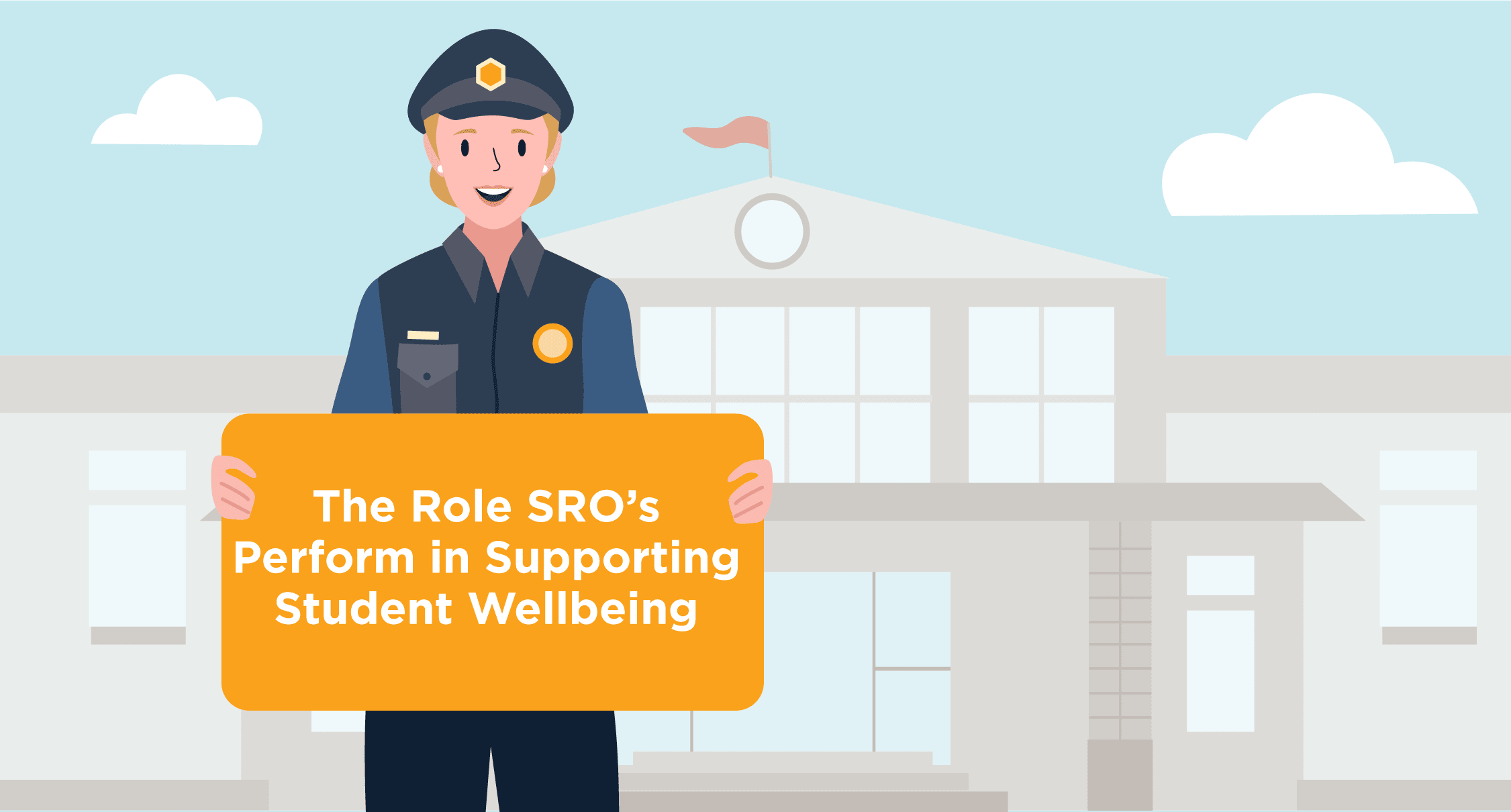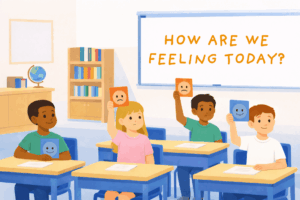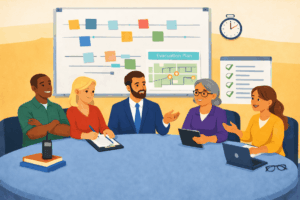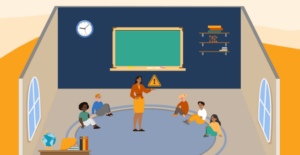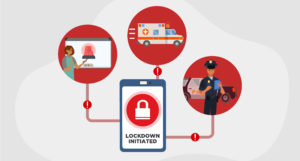Listen to this blog
4 minutes
School Resource Officers (SROs) play a vital role in supporting safety and student wellbeing in schools. A large part of their role is to maintain a safe and secure environment, respond to emergencies, and promote a culture of preparedness—but SROs expand beyond that scope, as well.
The National Association of School Resource Officers (NASRO) emphasizes that SROs serve three distinct roles: Teacher, Informal Counselor and Mentor, and Law Enforcement Officer. Increasingly, we find that the roles of informal counselor and educator supersede the law enforcement role in schools—and those roles often serve to help mitigate more serious behaviors, including those on the pathway to violence.
The role of the SRO
Succeeding in an SRO role requires more than stepping in as an authority figure—but what do these additional roles look like, and how do SROs help to change the school community’s perception of their role in the school culture?
1. More than law enforcement—the SRO as an educator
“The thinking that our reason for being in the schools is just to arrest juveniles couldn’t be farther from the truth. I feel like if I’ve arrested a child, that I failed somewhere… I will try to work with them and educate them and hopefully prevent them. After all, they are still children. They are still developing, and they are still learning life skills and how to handle their emotions while they’re learning ABC and 123 in school. All of that works together.” Heather Norred, Lee County Sheriff’s Deputy and School Resource Officer
Taking advantage of the educational opportunity SROs represent is key to a successful partnership between the school and law enforcement. Because of their knowledge and experience regarding law-enforcement related topics, SROs can:
- Act as a resource to students by providing guidance and information on drug and alcohol abuse prevention, domestic violence situations, and other public safety issues.
- Head up educational programs such as D.A.R.E. and Too Good for Drugs & Violence, for example, enabling SROs to work with students to develop healthy mindsets and life skills.
- Provide informal learning opportunities, such as teaching a student how to perform a proper handshake, which can be equally impactful.
It all comes down to building positive relationships with the students. When SROs are empowered to grow into their role’s opportunities, the whole school—and especially the students—benefit.
2. Supporting student wellbeing and healthy behavior
“If we have a child that is behaving in a certain way, I want to know why. What is the root of that behavior? If I can answer that why and I can help that child, that has the possibility of preventing some type of act of violence on our campus or maybe them going down a road that would cause them to become unsuccessful and stop some goals that they might have.” Heather Norred, Lee County Sheriff’s Deputy and School Resource Officer
SROs hold a unique position enabling them to intervene in a student’s behavior to help redirect them onto a healthier, more successful path. Rather than restricting SROs to a disciplinary role, providing space for them to act as role models and become a trusted adult for students means they can help shift student behavior and school culture toward habits supporting students’ well-being and healthy behaviors.
What does that look like?
“Jumping in on basketball games during PE, sitting in the dunk tank, meeting the parents. When they trust you and they know you and they know you care, they’re going to talk to you and they’re going to let you know about situations.” Heather Norred, Lee County Sheriff’s Deputy and School Resource Officer
- Include your SROs in your planning—and training—sessions for reporting student wellness concerns, such as the low-level concerns that staff can identify through StudentSafe.
- Encourage SROs to become involved in student activities, such as Lee County Sheriff’s Deputy and SRO, Heather Norred, mentions.
- Engaging students in formal and informal learning opportunities also helps SROs build the positive relationships that enable them to best support the safety of their schools.
3. Integrating with the learning community
“We’re here to partner with the schools, with the teachers, administration, counselors, social workers, everybody that’s involved to support and help our children be successful in life. We’re just another part of that. Integrating into the school community—that’s what I’m here for. To build the relationships with our students so that they have someone they can turn to, and someone they can talk to.” Heather Norred, Lee County Sheriff’s Deputy and School Resource Officer
By intentionally cultivating healthy relationships with students and school personnel, SROs can increase their positive impact within the community—which can include reducing school-based violence and bullying, creating a safer school environment.
What does this mean for students in need of mental health support?
The school environment brings with it special circumstances not always addressed through standard law-enforcement training. Integrating into the learning community means schools:
- Provide SROs with specific mental health training;
- Encourage collaboration with school-based counselors, which can help improve student outcomes regarding mental health.
- Create opportunities for SROs to connect and collaborate with mental health professionals and school-based counselors through a team-based approach.
Through building these positive relationships, schools and SROs can create and implement effective interventions and strategies to foster positive relationships among SROs and students with mental health needs.
Learn more about SRO perspectives on student wellbeing
By forming strong relationships with both students and staff, the SRO becomes a trusted voice within the school. As an educator, the SRO provides knowledge and perspective that promotes growth and allows the SRO to be seen in a role beyond that of one who serves a strict enforcement function.
To learn more about SROs and their perspectives on student mental health and school safety, follow our blog to view the results of our recent NASRO survey, which will be released in March.
Related Resources
Guide to K-12 Student Wellbeing
Strategies to Recognize, Document, and Support Students in Distress
Listen to this blog
4 minutes
